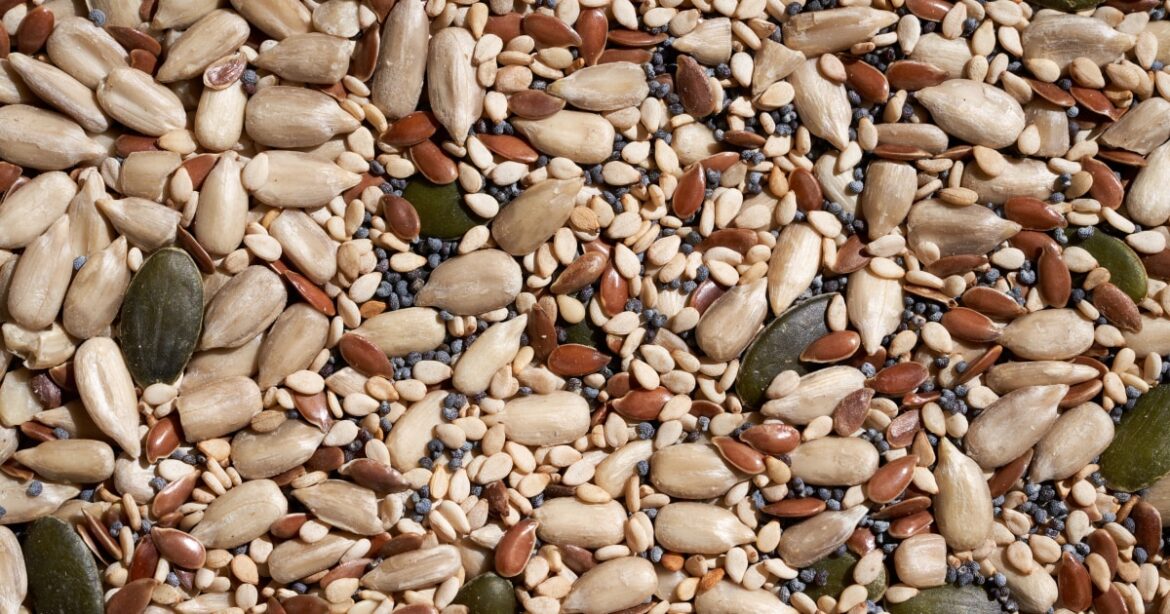While protein gets all the glory these days, it’s actually fiber that dietitians want us to stock up on more frequently.
This nutrient is essential for so many bodily functions, explains Natalie Rizzo, registered dietitian and TODAY nutrition editor. You need fiber for proper gut health, but also heart health and blood sugar control.
And seeds are one of the most concentrated places to get more fiber — along with plenty of other health-boosting nutrients — in your diet. In fact, seeds are considered nutritional powerhouses, as TODAY.com explained previously.
Because they’re packed with healthy fat, vitamins and minerals, as well as both protein and fiber, you can add these little crunchy snacks to almost any meal for a healthful boost. And if it’s fiber you’re after, Rizzo recommends looking out for these two seeds in particular.
Seeds With the Most Fiber
It can be a little bit challenging to compare seeds directly like this, Rizzo says, because they can have very different serving sizes.
These are her two top picks for fiber per 1-ounce serving of seeds:
Chia Seeds
It’s probably no surprise to see these little fiber-packed seeds on this list. They’re considered an “all-star” when it comes to fiber, as registered dietitian Whitney Linsenmeyer, Ph.D., told TODAY.com previously.
In 2 tablespoons of chia seeds, you’ll get a whopping 10 grams of fiber. Considering adults should aim to eat between 25 and 38 grams of fiber per day, that’s a pretty incredible boost.
Chia seeds are also rich in plant-based protein, anti-inflammatory fatty acids and calcium, TODAY.com explained previously.
The challenge with chia seeds, Linsenmeyer explained, is that it’s almost impossible to really eat a full serving of them to get that massive dose of fiber. Sprinkling them on a salad or in a smoothie is a good start, but it won’t get you all the fiber a full serving offers.
That’s why she and Grace Derocha, registered dietitian, both recommend giving chia seed pudding or overnight oats with chia seeds a try. These make-ahead dishes take advantage of the way chia seeds naturally swell and create a gel when soaked in liquid.
And there are endless variants of these recipes, which you can tailor to your preferences or whatever fruit happens to be in season.
Flaxseeds
Alongside chia seeds, flaxseeds are one of the best high-fiber seeds, Rizzo says.
A single 2-tablespoon serving of flaxseeds provides 6 grams of fiber, which is a little less than chia seeds but still a respectable amount. With their nutty flavor and satisfying crunch, flaxseeds are great in salads, smoothies, baked goods or sprinkled over yogurt or cottage cheese.
You can also use ground flaxseeds in baked goods or as a thickener in veggie burgers, Rizzo added. Ground flaxseeds can even be used as a substitute for eggs in some recipes.
Flaxseeds also have some unique heart-health benefits to keep in mind in addition to the support that fiber provides. A serving of flaxseeds provides about 20% of your daily magnesium, a mineral that’s necessary for proper heart function.
Additionally, flaxseeds are a rich source of plant-based omega-3 fatty acids and anti-inflammatory compounds called lignans, both of which benefit your heart.


Dining and Cooking